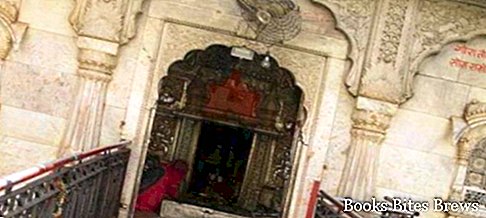What to see in Rajasthan, itinerary including the main monuments and places of interest of the state, including Amber Fort, Palace of Winds in Japur and Deshnoke temple of rats.
Tourist information
Located in the northwestern part of India on the border with Pakistan, Rajasthanal is characterized by a territory divided into two parts by the Aravalli Mountains.
The north-western area, which includes a portion of the Thar Desert, stands out for its sandy and arid soils, while in the south-eastern part the terrain is mainly flat and hilly, therefore suitable for agriculture.
The state of Rajasthan is one of the most attractive tourist destinations in India, where ancient traditions and cities with fortresses, temples and refined palaces in the Rajput and Mughal style are preserved, fascinating testimonies of the meeting of different cultures, which have marked the history of the country.
The state, well connected with other parts of India, is easily accessible from Delhi and Bombay.
Jaipur is the capital, other important cities are Bikaner, Jodhpur, Ajmer, Udaipur and Kota.
What see
In the ancient capital Amber, located near today's Japur, there is the complex of the Royal Palace and the Fort, located along the slope of a hill, in a dominant position on Lake Maota.
Mansingh Palace, whose construction was started in 1592 under Mansingh I, is the oldest part which, with various additions and alterations, reached its definitive aspect in the eighteenth century.
To reach this building, where an archaeological museum is housed, you need to climb the hill on foot, or board a jeep or ride an elephant.
Jaipur, the capital of the state since 1728, was named after its founder, the maharaja Jai Singh II, and is known as the pink city, a name deriving from the prevalent color of its houses.
Surrounded by a great wall, it includes various monuments, including the Jantar Mantar, built by King Jai Singh II between 1727 and 1734, an open-air astronomical observatory, with large masonry instruments.
Recommended readings- India: useful information
- Mumbai (India): what to see in old Bombay
- Bangalore (India): what to see in the capital of Karnataka
- New Delhi (India): what to see in the capital
- Calcutta (India): what to see in the city of Mother Teresa
The Palazzo dei Venti, built in 1799, is an eight-storey building whose finely worked facade abounds with niches and windows, which in the past were useful for court women to witness city life without being seen.
The City Palace, still the residence of the Maharaja of Jaipur, is a complex consisting of a palace with many courtyards, two museums and an armory.
Pushkar, located in the Ajmer district at an altitude of about 500 meters, is one of the oldest cities in India.
It is one of the sacred places of greatest importance for Hindu pilgrimages, where temples are numerous, one of the main attractions is Lake Pushkar, considered sacred by popular beliefs.
Udaipur, located in the southern part near the state of Gujarat, was founded by Udai Singh II of Mewar in 1568, on the banks of the artificial lake Pichola.
Known as the city of lakes, it offers enchanting landscapes and fairytale buildings, built in the Rajput-Mughal style.
Jodhpur, called Blue City, for the blue color of the brahmin houses, and City of the Sun, for the sunny weather throughout the year, is dominated by an imposing fortress, the Meherangarh Fort, a charming citadel fortified with inside palaces, temples and gardens, from the top of which you can admire an exceptional panorama of the city.
Jaisalmer is located on ancient trade routes from Arabia and Africa, in the suggestive Thar desert.
In the heart of the city stands the magnificent Fort, known as Sonar Quila.
Founded in 1156 AD, by Maharawal Jaisal Singh of the Rajput dynasty, the imposing yellow sandstone construction shines like a golden diadem during the day, while at sunset it acquires a honey-gold color, dissolving in the desert.
The fort is populated by many people, who live and work inside, made up mostly of buildings carved in yellow sandstone.
The Royal Palace, Raj Mahal, is the main attraction.
The Desert Festival takes place in Jaisalmer in February of each year.
Bikaner, located in the Thar Desert, is known for carpet manufacturing and also as the city of camels.
To visit the Fort of Junagarh, a large complex protected by a wall of red sandstone, formed by 37 bastions, which houses inside the palace in the shape of a labyrinth and various temples.
From Bikaner you can visit the Jainist temples of Bandeshwar and, continuing, at a distance of about 30 kilometers, you will find the village of Deshnoke, famous for the Karni Mata Temple, also called the Temple of the mice, since crowded with hundreds of mice that they are fed by Hindu priests and faithful, who consider them sacred.
Agra, located in the western part of the state of Uttar Pradesh, in northern India on the banks of the Yamuna River, is famous for the Taj Mahal, a grandiose mausoleum built between 1631 and 1648 by the Mughal emperor Shah Jahan, in honor of his wife who died in 1631.
Masterpiece of Muslim art in India, it is included among the UNESCO World Heritage Sites.




